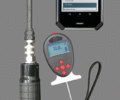Global PCR markets continue to be affected by supply deficit
Global PCR markets continue to be affected by supply deficit
<![CDATA[
Prices for some recycled plastics have decoupled from their virgin counterparts more recently in the U.S. and Asia, though this trend emerged earlier in Europe, particularly for food-contact recycled polyethylene terephthalate (rPET). That decoupling has been further fueled by rising prices for some postconsumer plastics (PCR) that are in insufficient supply to meet the demand that exists, said Mark Victory, senior editor, recycling, at London-based ICIS.
Victory, speaking during the Bureau of International Recycling (BIR) Global eForum Plastics session Nov. 8, said food-grade rPET pricing in Europe has been greater than that of virgin PET since 2012. “That has repeated across all recycled polymers more recently,” he said, adding that pricing for virgin plastics no longer serves as a “price cap” on PCR.
Victory said that starting in 2018, colorless rPET flake has traded above virgin, illustrating how much demand has increased as brand owners focus on meeting their sustainability targets.
The relationship between virgin PET pricing and that of rPET has become more volatile as well, he said, particularly in Europe, which “shows just how decoupled those prices have become.” While Victory said the materials are still related, “the supply and demand factors in a specific market are more important” for rPET pricing than virgin PET pricing.
To meet the 2025 target of 25 percent recycled content in PET beverage bottles established by the European Union’s Single-Use Plastics (SUP) Directive, collection volumes must increase by more than one-third, he said. Those volumes must grow by a further 60 percent by the end of 2029 to meet the 30 percent recycled PET target that goes into effect in 2030. Victory said these recycled-content targets would require an average growth rate of 4 percent per year and 6 percent per year, respectively. To date, however, the average growth rate for collection has been 2 percent, he said.
However, many brands have set higher recycled-content goals than mandated by legislation, Victory said, which would necessitate a doubling or quadrupling of the increase in collection required to meet the SUP targets.
The growth rates required for polyethylene (PE) and polypropylene (PP) are even greater than for PET, he added. From 700,000 metric tons to 800,000 metric tons of high-density polyethylene (HDPE) are mechanically recycled in Europe per year, Victory said, which is 11 percent of virgin HDPE packaging consumption. Food-grade rHDPE accounts for only 100,000 metric tons of production. Similarly, 700,000 metric tons to 800,000 metric tons of low-density polyethylene (LDPE) are mechanically recycled annually, which is 15 percent of overall LPDE packaging consumption, while 600,000 to 700,000 metric tons of PP are mechanically recycled annually in Europe, which is about 5.52 percent of the overall volume of PP used in packaging.
Bale shortages also have affected the availability of recycled material. Victory said bale supplies have tightened in part because of plastic packaging taxes and consumer pressure driving new interest in recycled content in southern Europe, as have changes to input mix because of COVID-19, sorting capacity restrictions and system changes and prebuying for future projects.
Material recovery facility operators and reclaimers based in the U.S. have told Recycling Today that European reclaimers have been purchasing bales or PCR from the U.S. Ben Brooks of S&P Global Platts also referred to the growing global market for recycled plastics earlier this year.
Tight collection and rising demand have contributed to historically high prices for bales of recyclable plastics and recycled pellets that are decoupled from virgin resin prices, Victory said, particularly for plastics used in packaging applications.
A similar situation has developed in the United States.
Victory said tight bale supplies have led more recyclers to look to mixed plastic bales as the cost of sorting might be more economically favorable now than it was in the past. He added that this is affecting chemical recyclers, as they normally target this material, and forcing innovation within the plastics recycling sector.
Sally Houghton with Plastic Recycling Corp. of California, a member of the BIR Plastics Committee, said PET bale prices in that state tripled over the last couple of years in response to demand from the brands. Similar to the EU, California also is phasing in recycled-content mandates for beverage packaging, and Houghton wondered if some brands will opt to pay the penalty for not using PCR rather than pay the ever-increasing cost of rPET. (This concern also was raised by speakers during the Paper & Plastics Recycling Conference Webinar Series in late October that Recycling Today hosted.)
However, Victory said that brands increasingly understand that recycled content is not an option when consumers’ feelings about recycled content and sustainability are so strong. “The business risk of not using rPET is outweighing the cost for using it.”
Max Craipeau of China-based Greencore Resources Ltd., who moderated the pricing discussion, said larger brands are signing recycled material supply contracts for the next two years, which is making it difficult for smaller players to enter the market.
Victory agreed that some businesses likely will struggle to obtain the PCR they need to meet their sustainability targets.
In response to Craipeau’s question about the number of additional recycling facilities needed to meet the 25 percent recycled-content mandate for beverage containers in the EU, Victory said 30 new plants will be required if all of their output was food-grade. “It’s hard to give an exact number because everything is in flux right now.”
]]>
Source: Recycling Today
Global PCR markets continue to be affected by supply deficit
<
